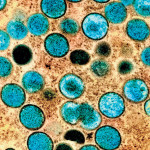As research increasingly shows the benefits of earlier HIV treatment, the World Health Organization (WHO) has revised its treatment guidelines to recommend people living with the virus begin antiretrovirals (ARVs) when their CD4s hit 500 or below, as opposed to the previous benchmark of 350.
Researchers with the University of California, San Francisco (UCSF) and the WHO’s HIV/AIDS Division recently conducted an analysis of 13 observational studies of ARVs and found that people who began therapy when their CD4s were at or above 350 had a 34 percent reduced risk of death when compared with those who started with CD4s below 350.
The available data was less clear about the benefit of starting treatment before CD4s drop below 500.
The WHO also recommended that various groups of HIV-positive people receive ARVs regardless of CD4 count, including all children younger than 5, all pregnant or nursing women and anyone in a relationship with an HIV-negative partner. The agency continues to advise that everyone living with both HIV and active tuberculosis (TB) or hepatitis B receive ARVs.
The new guidelines will extend drug eligibility from the current 17 million to 26 million people in poor and middle-income countries.
“This puts the burden on a lot of developing countries,” says Andrew Anglemyer, PhD, an epidemiologist at UCSF and the analysis’s lead author. “Now they have to come up with a certain percentage of that demand. And where is the money going to come from?”
WHO Revises Treatment Guidelines






Comments
Comments